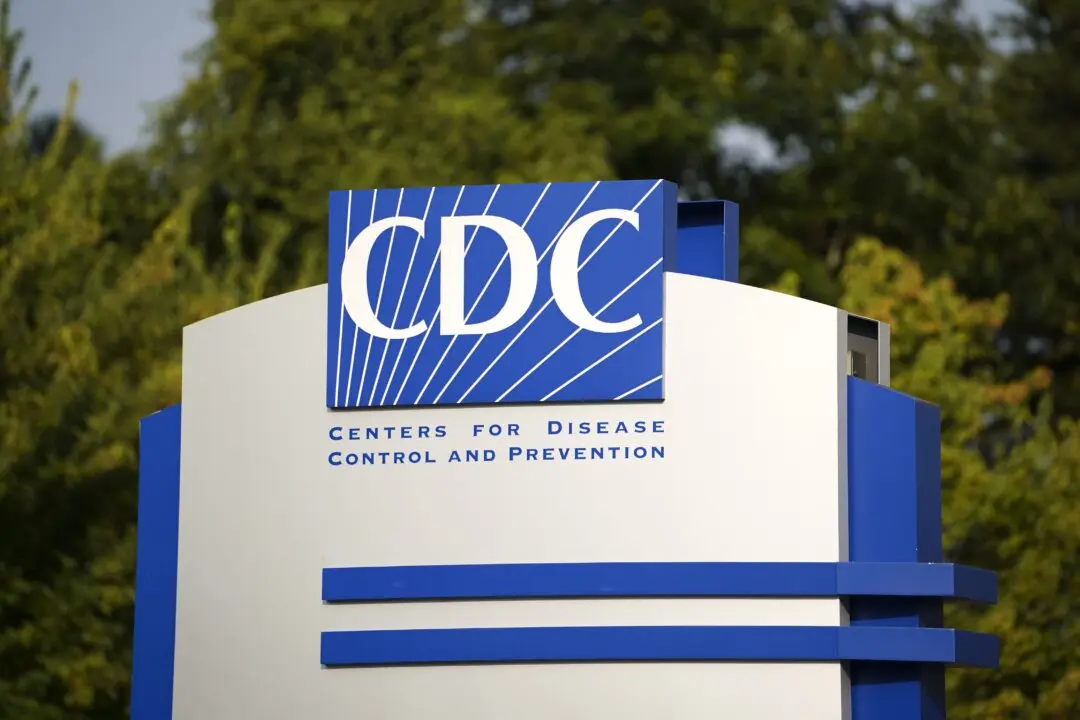The Ohio Supreme Court struck down a Republican-authored congressional map this week, saying it violates anti-gerrymandering rules found in the state constitution.
The court gave Ohio lawmakers 30 days to redesign the map for the 2024 elections.
If they cannot reach a consensus, the Ohio Redistricting Commission will have 30 days to adopt the congressional map.
In a 4-3 decision, the court ruled that the map was slightly more favorable to Democrats than one rejected earlier this year, but it “unduly favors” the Republican party.
Chief Justice Maureen O’Connor, a Republican; and Democratic party Justices Michael P. Donnelly, Melody Stewart, and Jennifer Brunner, comprised the majority opinion.
Republican Justices Sharon L. Kennedy, Patrick F. Fischer, and R. Patrick DeWine dissented.
Six other times this year—including five times on state legislative maps—the same combination of justices has come to a similar decision.
Since primaries were held in May using the districts as presented in the rejected map, that map will be used in the November general election.
The majority agreed with plaintiff experts who said Republicans created the map to enhance their chances of winning general elections and again split the Akron, Cincinnati, and Cleveland regions in a way that would reduce Democrats’ chances of winning a fair share of Ohio’s 15 congressional districts.
As an example, they explained that splitting Hamilton County, which includes Cincinnati, forms one heavily Republican district and one slightly Democratic district.
The map places Democratic voters “into a few dense Democratic-leaning districts, thereby increasing the Republican vote share of the remaining districts.
As a result, districts that would otherwise be strongly Democratic-leaning are now competitive or Republican-leaning districts,” the majority opinion read.

Justice DeWine, whose father, Mike DeWine, is governor of Ohio and serves on the redistricting commission, joined Kennedy in a dissenting opinion.
DeWine and Kennedy agreed with Republican arguments that they decided to focus on establishing competitive congressional districts instead of emphasizing proportionality, which is intended for each party to win a volume of seats that match the statewide share of voters.
As of Oct. 21, 2021, Ohio has 7,982,501 registered voters—947,027 Democrats and 836,080 Republicans.
Most of the state’s registered Republicans live outside of Ohio’s three largest counties—Hamilton (Cincinnati), Franklin (Columbus), Cuyahoga (Cleveland), Montgomery (Dayton), and Lucas (Toledo).
Proportionality language exists in Ohio’s state legislative redistricting guidelines, but there is no such language in the state’s congressional redistricting rules.
“The majority clearly has a number of Democrat congressional seats in mind, and any plan that does not result in that number will be deemed unconstitutional and, therefore, invalid,” Kennedy and DeWine said.
Kennedy is running for chief justice against Brunner in November.
Fisher, DeWine, and Kennedy said that, since the maps won’t take effect until the 2024 elections, more time should have been invested before coming to a decision.
“This court’s failure to hold even one hearing in these cases undoubtedly raises concerns among the public regarding this court’s lack of transparency, and one might wonder why such concerns have not been voiced in the media,” Fisher wrote in his dissent.
The state supreme court ruled in January that the first set of congressional maps was unconstitutional, which tasked the General Assembly with resolving the issue. When the General Assembly did not act within the required 30-day time frame, the process was moved to Ohio’s Redistricting Commission.
The Republicans on the commission are: DeWine, Secretary of State Frank LaRose, State Auditor Keith Faber, Speaker of the House Rep. Bob Cupp, and Senate President Matt Huffman.
House Minority Leader Allison Russo and state Sen. Vernon Sykes represent the Democrats.
On March 1, the commission passed the second set of maps on a 5-2 party-line vote.
Lawsuits were filed by the Ohio chapters of the ACLU and the League of Women Voters, and the National Democratic Redistricting Committee’s local affiliate. The legal action led to this week’s court ruling.
“With today’s ruling, the Ohio Supreme Court is standing up for Ohio voters by striking down an unconstitutional congressional map designed to give Republicans an unfair advantage,” Abha Khanna, a lawyer for the Democratic redistricting group, said in a statement. “Ohioans made their voice heard, and they deserve to vote in fairly drawn districts.”
After the decision, state Rep. Jeff Crossman reiterated his call for the filing of a criminal complaint against the Redistricting Commission.
Crossman, who won the Democratic primary for attorney general and is running against incumbent Republican Dave Yost in November, submitted a criminal complaint with the city of Columbus in May. The filing alleges two counts of dereliction of duty and interference with civil rights against the commission’s Republican members.
On paper, the map favors Republicans to prevail in 10 of Ohio’s 15 congressional districts at a time when the Republicans are striving to regain control of the U.S. House.
According to individual race ratings from Inside Elections on July 1, Republicans would gain seven House seats nationwide if elections were held on that day. They only need a net gain of four seats to reclaim the majority.
Ohio currently has 12 Republicans and four Democrats in Congress. The state is losing a seat following the 2020 U.S. Census results.
With the maps that will be used in the November general election, only one seat flipped from Republican-leaning to Democratic-friendly.
His race against Democratic challenger Greg Landsman is rated as a “toss-up” by the Cook Political Report, Inside Elections, and Sabato’s Crystal Ball.

She was first elected to the U.S. House in 1982 when President Ronald Reagan was midway through his first term.
For a decade leading to the current election cycle, the 9th District covered 140 miles of Lake Erie’s coastline, including the Democratic strongholds of Toledo in northwest Ohio and Cleveland in the state’s northeast corner. It was called the “snake on the lake” district.
Kaptur breezed to election victories, consistently securing more than 60 percent of the vote.
Now, the 9th District includes Ohio’s rural northwestern corner, which is mostly conservative. Cleveland is no longer in the district. J.R. Majewski, who is endorsed by former President Donald Trump, won the Republican primary. Political forecasters give Republicans a slight edge in winning the district.
Rep. Tim Ryan, who won the Democratic U.S. Senate primary and is running against Republican J.D. Vance, currently represents the district, which once included Democrat-stronghold Youngstown.
Sykes’s father, state Sen. Vernon Sykes, is part of the seven-member commission working on the new congressional map.
The Cook Political Report and Sabato’s Crystal Ball call the race a Toss-Up while Inside Elections rates it as Tilt Republican.
Chief Justice O'Connor, the Republican who has voted with Democrats for all seven state legislative and congressional map cases, cannot seek another term because of age limits. Kennedy and Brunner are vying to replace her.
Ohio Supreme Court elections in November could determine the outcome of future redistricting cases.
Ohioans will head to the polls on Aug. 2 to vote for state House and Senate primaries. They will use maps that were approved by two federal judges, overruling the Ohio Supreme Court’s rejections.
The second primary, which is expected to see a low turnout, will cost taxpayers around $20 million, according to the Ohio Secretary of State’s office.
The state legislative maps apply to the Aug. 2 primary and the Nov. 8 general election. The Ohio Redistricting Commission must author new maps for 2024.





